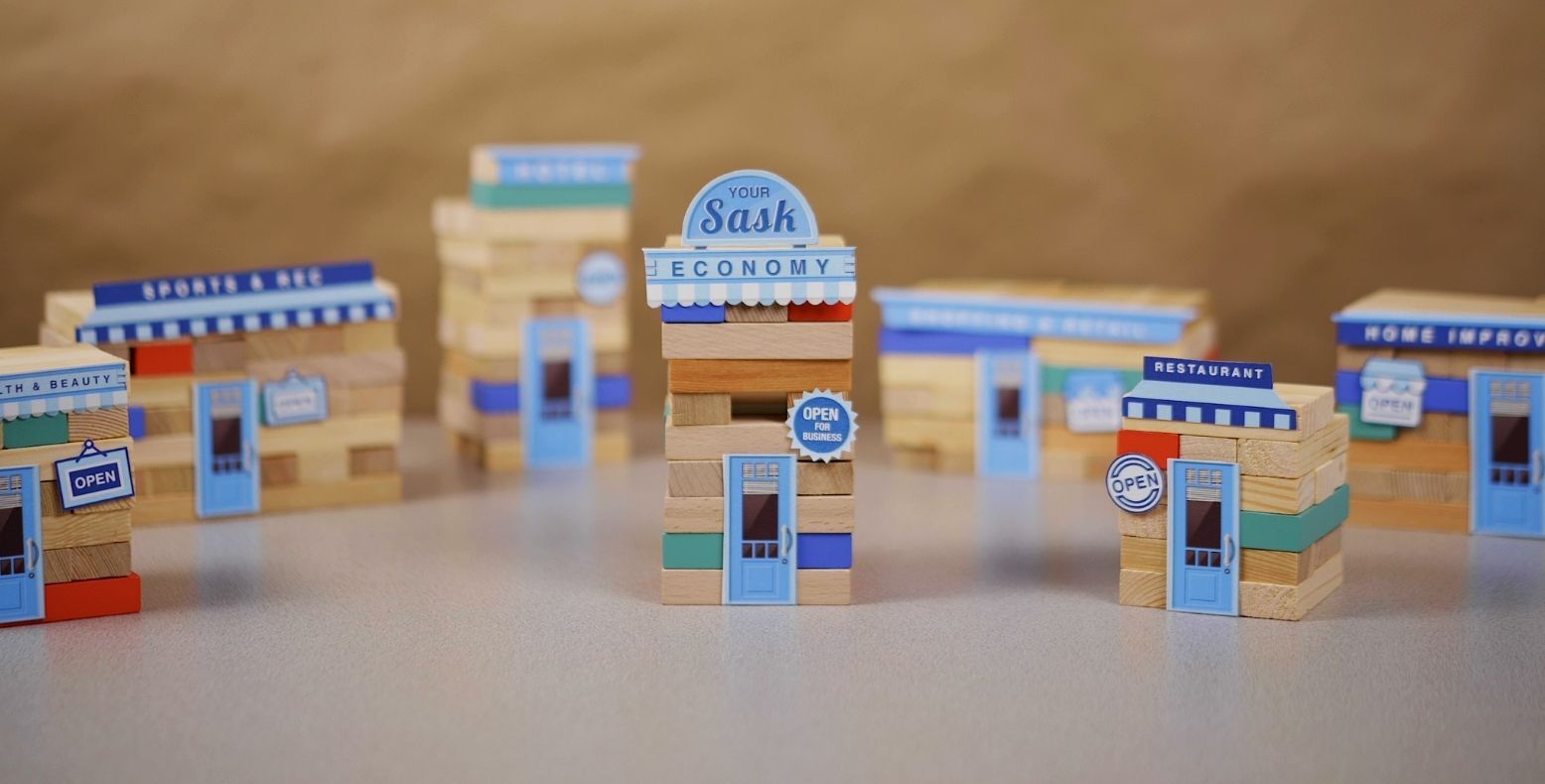A shock to the system
I think it’s safe to say that 2020 has been one for the books! This global pandemic came on fast and furious, leaving us all wondering, “What do we do now?”
Consumers are understandably reducing their spending habits and cancelling travel plans, while others are hoarding toilet paper and preparing for the world to end.
From a marketing perspective, this “new normal” is quite the challenge to navigate. Traditional advertising seems to fall flat at a time when mandatory masks and hand sanitization stations remind us daily that everything has changed.
Instinctively, during the first few weeks of the pandemic, many businesses made the decisions to flood customers with emails, social posts, radio and TV spots on how they were responding to the pandemic. Their main goal was to encourage customers to continue to visit their brick-and-mortar stores and reassure them that they were doing everything possible to follow all the proper safety protocols and provide a safe environment for their customers.
Another instinctive move by businesses was to cut back on their marketing efforts, or completely put campaigns on hold. But was this the right move?
Advertising during the pandemic
Take a deep breath and pivot
Businesses are good at recognizing where there are opportunities within challenges.
So instead of pumping the brakes, now is the time to take a close look at your current marketing strategies and see where you could adjust them to fit the changing market conditions.
Believe it or not, during this crisis, you might be able to maintain and even gain a competitive advantage by investing more, not less, into your marketing strategy. How is that possible you ask? Well, you’ve got to make the right moves and follow these next few important steps for success.
Find the right message and the right tone
Step 1: Communication counts
I think we can all agree that consumers have seen and heard enough of the “unprecedented times” and sad piano music over the last few months. We know these are trying times, and being reminded of it daily, won’t change the outcome. So how do you make sure your message is being heard and not drowned out in an overwhelmingly loud marketspace?
Prior to the pandemic, your main goal may have been to increase profit, sell, sell, sell!
But now it’s time to shift that mindset and prioritize the needs of your customers. You’ll need to spend some time learning your audience, if you haven’t already, and find ways to relate to them during these times. Many of them may have lost their jobs, are suffering from mental health disorders, feeling lonely or scared, while other may have only been impacted minimally, or not at all.
Make sure that your messaging portrays that you understand the gravity of the situation, while still gaining or maintaining the respect and loyalty from your customers.
Your objective should be to look for ways to put your audience first, by using messaging with a sensitive, relevant, authentic and compassionate tone. Finding that personal connection to your audience through your brand is what will keep you top of mind when you need it the most.
In difficult times, consumers don’t want brands to keep advertising to them, they want someone to give them support and guidance. So make sure to spend some time considering how you can help, or how your product can make a difference during this time.
It’s important not to monetise the situation, as some businesses have been criticized for their lack of sensitivity and for capitalising on the virus as a business gain.
Campaigns such as, “Covid-19 Sale on Now,” or “Pandemic Special,” are a big no-no!
Now, I’m not saying that businesses should throw their chances of any revenue out the window and only focus on empathizing with their customers. Your secondary message should include what you as a business are promising to them now.
Is it a new promise? Is it the same promise? Why should your customer’s care?
The next step is will be extremely important in helping you stand out and spread your message in an overcrowded marketspace.
Meeting customer needs during a crisis
Step 2: Lead the pack
Now is the perfect time to find a way to do something a little outside of the box. Something that will help consumers take note and listen.
Take a look at the company Daily Harvest. They’re known for their healthy meals and snacks, delivered right to your door. Since a lot of consumers have cut back on spending, removing meal subscriptions such as this, was a huge cause of concern for them.
Instead of halting all production, Daily Harvest decided to take a look at the bigger picture and find a way to give back. They decided to spend a good chunk of their marketing budget on donating thousands of their frozen smoothies and bowls to frontline healthcare workers, and plan to continue doing so for as long as the hospitals remain in crisis mode. This was a caring and compassionate way to show their support and build respect and loyalty from not only their own customers, but new customers as well.
Another challenge they faced, was launching a new product during the pandemic. Flatbreads!
A product launch has its own challenges any time of the year, let alone trying to push out a new product during a time when customers are cutting back on their spending.
Daily Harvest accepted the challenge and found a unique way to do this. With employment rates down, they decided to hire chefs who were out of work due to the pandemic and have them help them co-create new flavors and content for the flatbreads. Not only did they find a way to tell a great story with their new flatbreads, but they actually found a way to provide jobs in some of the most trying times. Wow!
Another great example of a pivot was watching many Saskatchewan distilleries see the shortage of hand sanitizer in the province and re-invent their business models. Lucky Bastard Distillers and Stumbletown Distilling were two of these businesses.
Using their regular bottling line and bottles, Lucky Bastard Distillers were able to pivot, and follow the guidelines from the World Health Organization (WHO) to provide a solution for the shortage. Keeping their efforts local, the distilleries offered hand sanitizer to first responders and emergency workers at no cost.
Building your credibility as a compassionate and understanding business during times of crisis is something your customers will remember. But you must communicate it well and live up to your words.
In a crisis, media consumption changes
Step 3: Perfect the placements
Now that you’ve pivoted and found a new way to communicate your product or services. Where are you going to share this message?
With people working remotely and living under restrictions, it’s no surprise that social media usage has skyrocketed. A great first step is to take full advantage of this surge in users and allocate a good chunk of your marketing budget here. This includes placements such as display and YouTube pre-roll, along with Facebook, Instagram, Twitter, etc. Since many people are being encouraged to stay inside, marketing placements such as outdoor billboards and transit wraps might not make as much sense as they used too.
Statistics show that 85% of customers now research a product online prior to deciding whether or not to purchase an item or service. Therefore, it makes a lot of sense for companies to be spending their time and money finding ways to provide information about their product online and pushing this information to the appropriate audience.
Here are a few important questions to ask yourself when strategizing how to up your game online:
- Is your company’s website delivering a superior customer experience? Can customer’s easily find what they need with minimal clicks?
- Have you considered a Pay per Click (PPC) online advertising campaign to draw customers to your website?
- Is your company utilizing the correct social channels that make the most sense for your product or service?
- Could you improve your social content? (Did you know that 6 out of 10 people would rather watch online videos than television?)
Another avenue to consider is taking advantage of virtual meeting space.
If you were planning to invest money into trade shows or other in-person events that have since been canceled or postponed, have no fear! You should consider investing that budget into virtual events instead of cancelling all together. By using virtual meeting programs such as Zoom or Microsoft Teams, you can reformat in-person events into engaging virtual gatherings. Hosting or attending virtual events and webinars is a quick, interactive, efficient and effective option for connecting in real time with your customers.
Review your advertising regularly
Step 3: Hold on to your seats
So where do we go from here?
Firstly, I think that It’s important to remember that this pandemic won’t last forever. But it may last a long long time.
I certainly don’t have all the answers for navigating these turbulent times, but the best advice I can give, is as a business, continue following the steps above and plan strategically for the foreseeable future. Whether normality resumes in two months or eight years, you should arm your business with the right ammo to provide outstanding communication and the proper marketing placements for the time being. This will give your businesses every opportunity to remain relevant, competitive and respected in the market.
Review your current marketing campaigns and creative regularly and find areas for improvement. What you decided to run two weeks ago isn’t necessarily appropriate today.
Customer service above all else
We’re in it together
And last but not least, focus on your customers. Without them, you have no business! So be sure to be empathetic during these times and provide value where it counts.
We will all navigate our way out of this mess slowly but surely.



